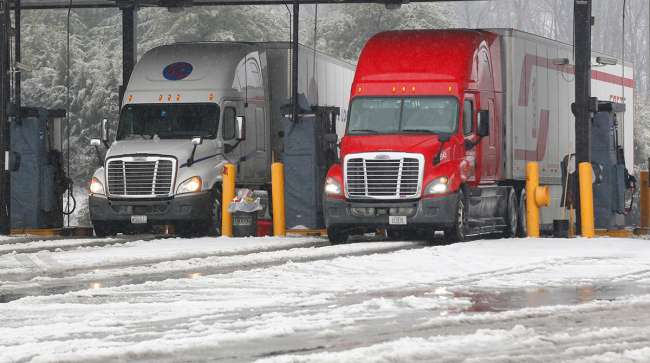Diesel Price Declines 3.6¢ a Gallon

The U.S. retail diesel average declined 3.6 cents to $3.027 a gallon, the Department of Energy reported Feb. 20.
The decline follows a 2.3 cent dip the prior week. Trucking’s main fuel is 45.5 cents more expensive than a year ago, DOE reported after its survey of fueling stations.
The average price of diesel declined in every region of the country, falling the most in the Midwest, where it declined 5 cents, according to the Department of Energy’s Energy Information Administration.
The national average price for regular gasoline declined 5 cents to $2.557 a gallon, DOE said. The average is 25.5 cents more expensive than a year ago.
The average price of gasoline declined in every region of the country, falling the most in the Midwest, where it declined 7.3 cents, according to information from EIA.
Crude in New York and London slipped on expectations for robust supply growth from U.S. shale through the end of the decade, Bloomberg News reported.
The U.S. benchmark fell as much as 0.2% while Brent futures pushed 1.4% lower on Feb. 20. Comments by OPEC leaders about shrinking the worldwide crude glut and a post-2018 extension of output limits were overshadowed by prospects for unrelenting expansion in American shale fields.
U.S. oil output is on track for “phenomenal” growth, U.S. Deputy Energy Secretary Dan Brouillette said in an interview in London. “We are optimistic about 2019 and 2020, too.”
Crude is holding above $60 a barrel in New York, though futures are trading below last month’s highs. Although the Organization of Petroleum Exporting Countries and allied producers have succeeded in whittling away most of the glut that triggered the worst market collapse in decades, American explorers have been pumping crude at record rates, according to Bloomberg.
West Texas Intermediate crude rose less than 0.1% to $61.71 a barrel Feb. 20, the highest in two weeks, Bloomberg News reported.
A combination of new pipeline options, a rail car crunch, demand from Gulf Coast refineries and a thirst for U.S. supply from overseas means less is being hoarded. Stockpiles at Cushing, Okla., have slid in all but one of the past 14 weeks as booming American production bypasses the storage hub.
With the Louisiana Offshore Oil Port, or LOOP, this month loading its first very large crude carrier for export, speculation is increasing that bigger cargoes will head abroad.
“Sentiment for U.S. crude has improved in part from LOOP’s very large crude carrier export capability, but fundamentally, falling Cushing stocks remains the main support for higher WTI prices,” Den Syahril, an analyst at industry consultant FGE in Singapore, told Bloomberg.




